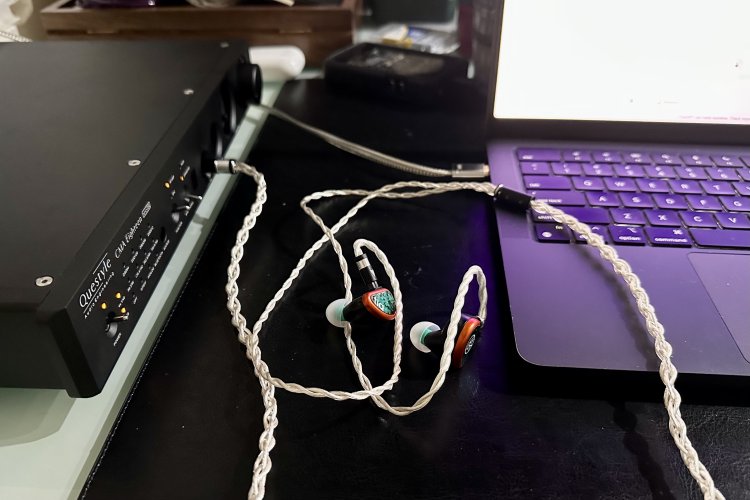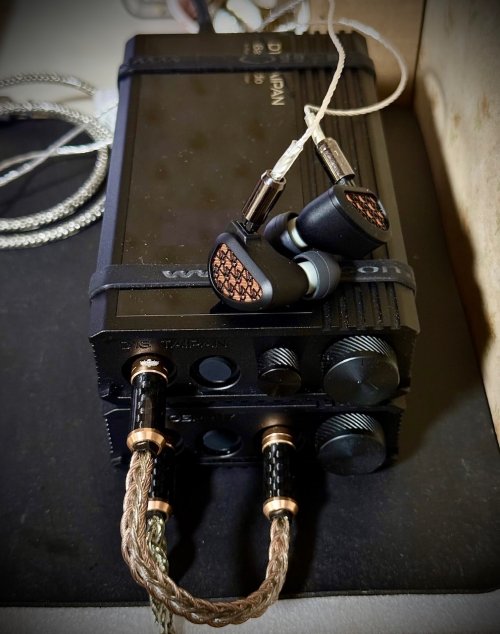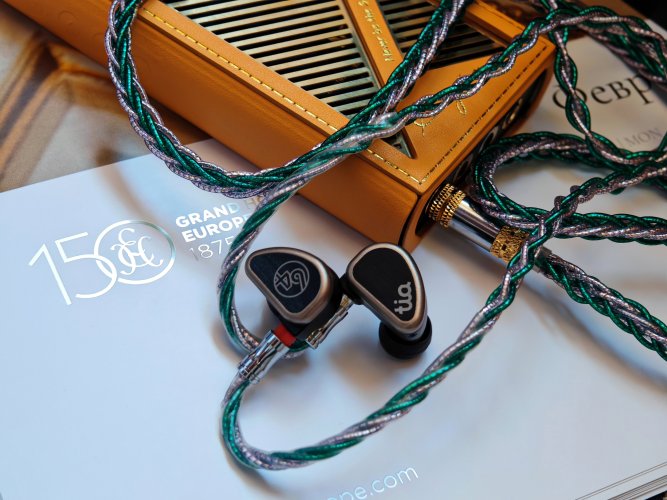The allotted
couple days have finally passed, so here are my initial impressions of 64 Audio’s brand-new Duo:
Like most of their other universals, 64 Audio’s Duo is a clean, well-balanced, versatile-sounding piece with their signature blend of dense, weighty notes and articulate
tia highs. It’s got hints of the Trio’s bite, but refined. It’s got the A6t or A18s’s beefy and natural - but not
rich or
saccharine - midrange. And, it’s got the Noir’s bold, dynamic lows too. I’ll go into those nuances a bit more later on, but, simply put, the Duo is the epitome of a jack-of-all-trades; neutral (positioning-wise) from top-to-bottom, clean, natural and - in a good way -
safe in tone, and all lifted by the myriad of tech 64’s managed to put inside it.

The lows, first off, have a good amount of drive and power to them. It’s a DD’s bass for sure. In terms of character, I’d say it’s got more of that warm, mid-bass
thump, rather than that dry, skull-rattling, sub-bass rumble. That’s not to say they're are veiled or hazy in any way. It just has a wetter, richer character to it. I’d say it marginally favours the
oomph of an acoustic kick drum over the visceral
verve of an electronic bass line. But, again, it’s certainly got the chops to serve either capably.
The midrange is classic
64 with a 1-2kHz rise for a solid, natural foundation, followed by a more relaxed upper-midrange, so you won’t get that shouty-ness to brass instruments, or that saturated character to vocals. It’s a treat for percussion, as it gives the snare a tight, ring-free attack and minimises harmonics on the toms. It deals male and female vocalists an even hand in projection or forwardness. Of course, the trade-off there is that it won’t deliver the full, roaring strength of vocal belts, guitar solos, horn altissimos, etc. Those passages won’t leap out and
slam as hard as they would on an in-ear with a more expressive or coloured midrange. But, again, those are compromises made for versatility, and I think they ultimately fit the in-ear’s MO aptly.
Up high, I think the Duo strikes a balance that’ll please fans of that
tia treble. It straddles the line between the Trio’s exuberance and the A18s’s almost-analog measuredness;
just enough for my tastes. One could say that it’s A6t-like in that regard, but the Duo slightly tops it for me in extension and headroom, which hands it a blacker background and stronger dynamic range. There’s that low-treble bite for snare crackles and vocal sibilants, but it’s, again, incredibly refined. And, it extends capably to give the in-ear's imaging authority and specificity, so notes always come off focused, crisp and well-outlined.
In terms of imaging and dynamics, I’d say the Duo punches above its price, but not to the degree of being a
giant killer either. It’s a step above most anything I’ve heard in its price range, especially when it comes to stereo separation and precision. It’s got a clear
left,
centre and
right, and its diagonals are fairly clean as well. Where it falls short to the “big boys” would be in sheer expansion and dynamic range. Its stage is out-of-head, but not exaggeratedly so, and its instruments aren’t capable of going from
dead-quiet to
explosive as much as a lot of flagship in-ears can. But, again, for its price range, it’s a superb effort, with
tia delivering the air, layering and finesse that it’s become synonymous with.

Finally, as I said on my post a few days ago, the semi-open design doesn’t affect isolation significantly for me. It definitely isolates more than some of the open headphones I’ve used. What the design ultimately does is take away that vacuum-like pressure or occlusion that you get when you stuff your ears with closed IEMs. It doesn’t necessarily make instruments sound further away, but it does help
remove the perceived barriers of the soundstage, which helps instruments sound a bit more free (or less compressed), and almost make you forget you're wearing IEMs in the first place. Notes will come off more open, they won’t lose their impact nearly as quickly, and you won’t have to bump the volume up on your source a couple steps every now-and-again to revive that kick.
All in all, the Duo is looking like a very clean, versatile and safe-sounding IEM in the best way possible. It’s got
casual listen written all over it; from the smooth, linear FR to the semi-open, non-fatiguing design. But, for the price point and audience it’s going for, that really is the ideal scenario if you ask me. It’s a great bang-for-buck buy for the audiophile who perhaps isn’t ready to spend upwards of $2000 for a high-end IEM (or multiple specialist ones). And, it’s also got enough technical performance, so veterans picking it up as an everyday carry won’t feel a drop-off at all from the “more capable” pieces in their collection.
I hope this helps you guys get a clearer picture of the Duo for now. I’ll be getting back to work on the full review soon, which should be up in a few weeks with comparisons against similarly-priced IEMs too. Thanks as always for reading. Cheers.











































